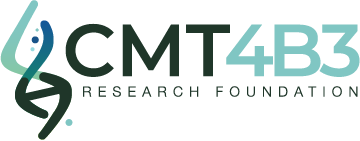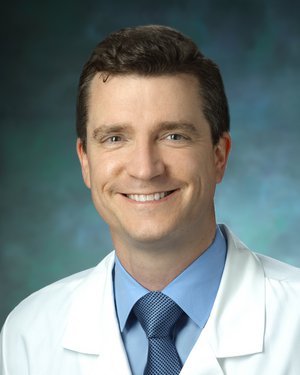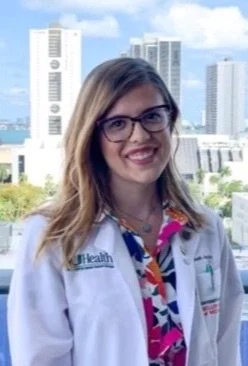
RESEARCH PROGRAM
CMT4B3 RESEARCH NETWORK
We have pioneered a Collaborative Research Network in order to accelerate the pace of groundbreaking research for Charcot-Marie-Tooth Disease Type 4B3 (CMT4B3) and related neuromuscular diseases. Our researchers are geographically distributed around the world. We do everything we can to reduce the barriers to research discoveries. The discoveries made by each researcher will be shared with the team. In this open and collaborative environment, researchers are encouraged to build on the work of others. In this way, research accelerates, more breakthroughs are made and more patients suffering from neuromuscular diseases are brought that much closer to treatments and cures.
RESEARCH PROJECTS
We fund projects that will translate into treatments that can slow, stop or reverse the progression of CMT4B3 and related neuromuscular disorders.
100% of donations received by our foundation support CMT4B3 research programs.
Dr. Robert Burgess
Jackson Laboratory
Recharacterize Mouse Model / Gene Therapy Testing
Grant Amount: $52,871 | Project Length: 1 Year
Dr. Robert Burgess, is rederiving and recharacterizing the CMT4B3 “knockout” mouse model. Jackson Lab is world renowned for their work with mice. He will also be performing in vivo efficacy studies in the CMT4B3 mice for our gene therapy projects.
The Burgess lab seeks to understand the molecular mechanisms of synapse formation and maintenance at two sites in the nervous system: the peripheral neuromuscular junction and the retina. In all of these studies, they are addressing basic molecular mechanisms which have relevance to human neuromuscular and neurodevelopmental disorders. Their continued research on the genetics underlying these disorders, and their continuing efforts to identify new genes involved in these processes, will increase the understanding of the molecules required to form and maintain synaptic connectivity in the nervous system.
Dr. Jason Chua Johns Hopkins University
“Discovering the cell type-specific biology of MTMR5 using a novel iPSC-derived model system of CMT4B3”
Grant Amount: $200,000 | Project Length: 2 Years
Dr. Chua will be using CRISPR to make human based cellular models. He will then test thousands of already approved FDA drugs on these cellular models to see if they are effective.
Dr. Chua’s primary research interests are in neurodegenerative disease with a special focus on autophagy — an essential housekeeping process in cells that is particularly important for the health of neurons. Autophagy may provide a way to break down the buildup of toxic proteins found in neurodegenerative diseases, thereby forming the basis of new treatment strategies for these incurable conditions.
Dr. Jim Dowling
SickKids Hospital
CMT4B3 Zebrafish Development
Grant Amount: $25,153 | Project Length: 1 Year
Dr. Dowling will be using CRISPR/Cas9 gene editing, to accurately model the disease by developing CMT4B3 zebrafish, with an emphasis on identifying phenotypes suitable for drug screening.
The overall goal of Dowling's research program is to discover therapies for childhood muscle diseases. He is particularly focused on muscle disorders that present in infancy, including the congenital myopathies and the congenital muscular dystrophies. Dowling utilizes a combinatorial approach that includes new gene discovery (using next generation sequencing technology), model organism development (particularly using the zebrafish model system) and both targeted, and large scale screening drug discovery approaches. He complements this work with cutting edge rare disease clinical research related to natural history, outcome measure development, and interventional trials.
Dr. Jefferson Doyle
John Hopkins
CMT4B3 Motor Neurons / Small Molecule Research
Grant Amount: TBD | Project Length: 1 Year
Will be evaluating and testing the eyes of the CMT4B3 knockout model from Jackson Laboratory. He will comprehensively evaluate myopia progression in the mice. He will also examine retinal structure, function and degenerative changes in the mouse model. They will then use the models to evaluate existing and new treatment strategies for myopia and/or retinal degeneration progression.
Jefferson Doyle, specializes in pediatric ophthalmology and genetic eye diseases. Dr. Doyle has published extensively on a number of genetic disorders over the past decade, holds several patents for novel therapeutic approaches to treat them. Dr. Doyle's main research focus is understanding the genetic causes and molecular mechanisms driving genetic diseases, and utilizing that knowledge to develop new therapeutic strategies for them.
Dr. Scott Harper
Nationwide Children's Hospital
Gene Therapy - Split Vector
Grant Amount: $124,927 | Project Length: 1 Year
AAV9 vectors are advantageous for gene delivery to neurons because they are naturally neurotropic in mice and humans, and have been used successfully in several human clinical trials, including a study in children with Spinal Muscular Atrophy (SMA). Despite these advantages, the relatively small packaging capacity of AAV vectors poses challenges for delivering genes that exceed its size. Unfortunately, the SFB1 gene is too large to package within a single AAV vector. To circumvent this size problem, Dr. Scott Harper will be developing a split-vector AAV system. To best ensure efficient gene expression, he will be testing 3 different strategies: (1) homologous recombination of AAV DNA; (2) trans-splicing of SBF1 mRNA; and (3) SBF1/MTMR5 protein trans-splicing using anintein system.
The Harper Lab is focused on developing RNAi-based treatments for dominantly inherited neuromuscular disorders. It uses a broad range of tools, including molecular techniques, biochemistry, viral vectors, and mouse models of disease.
Professor Henry Houlden
UCL Institute of Neurology
Natural History Study of CMT4B3 Patients
Grant Amount: $63,818 | Project Length: 18 months
Professor Houlden will be combining clinical features, clinical scales and serial MRI scans as markers of CMT4B3 disease onset and progression, and fibroblast lines from all known CMT4B3 families with biallelic SBF1 mutations with a range of reported disease severities in order to understand the Natural History of CMT4B3. He will then investigate the mRNA and protein expression of MTMR5 in order to further understand the functional pathway of CMT4B3, investigate the downstream expression of the SV2, mTORC1, RAB35, AKT, S6 and overall fibroblast dimensions, in comparison with MTMR5 expression in patient fibroblast lines. This will help undus to understand the potential of various therapeutic options.
Professor Houlden’s lab works on the genetics of neurodegeneration, peripheral nerve disease, ataxias, and paroxysmal movement disorders. The combination of genetic, functional cell biology and neuropathological methods is a particularly powerful approach for understanding neurological diseases and their pathological processes. His research group is carrying out a program of genetic and pathological investigations into human neurodegeneration. These genetic and neuropathological studies which integrate functional in vitro research, will translate into disease modifying treatments for human diseases.
Dr. Mario Saporta
University of Miami
Developing Human Platforms for Therapy Development for CMT4B3
Grant Amount: $250,960 | Project Length: 2 years
Dr. Saporta will be examining and phenotyping CMT4B3 iPSCs to find relevant disease symptoms. He will then take those lines and differentiate them into different disease models such as patient-derived motor neurons, sensory neurons, and glial cells in 3D culture systems.
Dr Saporta has spent the last five years developing human in vitro cellular models to study axonal phenotypes in inherited peripheral neuropathies (Charcot-Marie-Tooth Disease, CMT). CMT are a group of genetic neurodegenerative diseases caused by mutations in distinct genes that play fundamental roles in the physiology of peripheral nerves. He has identified abnormal distribution in the axons of human CMT2E/NEFL motor neurons as a cellular phenotype in CMT2E. He has used this model to investigate small molecules that could reverse this axonal phenotype. He will apply this groundbreaking work to CMT4B3.
Dr. Stephan Zuchner
University of Miami
Gene Therapy - MiniGene
Grant Amount: $208,050 | Project Length: 2 Year
The SBF1 gene is too large to fit into the standard AAV9 vector. In order to allow for the tried and proven AAV treatment route Dr. Zuchner will be constructing a SBF1 mini gene that fits into AAV9. Such an engineered shorter version of SBF1 still needs to retain its main biological functions. While there are no patients known that have naturally occurring mini variants of SBF1, different versions of engineered minigenes will be tested in cell lines and animal models for accurate processing, delivery to cell compartments, interaction with binding partners, and rescue disease symptoms.
Dr. Zuchner is a trained neurologist and molecular geneticist with research interests in identifying genetic variation associated with disease. He has spearheaded the Inherited Neuropathies Consortium (INC) His lab has identified several genes for Mendelian neurodegenerative disorders and also evaluated risk factors for complex genetic conditions, including Alzheimer disease, Parkinson disease, and obsessive-compulsive disorder. His lab is amongst the pioneering groups that have promoted genome sequencing methods for disease gene identification in humans, mice, and drosophila.
Generating iPSC Lines & Edited iPSC Lines
Cost: $29,177 | Project Length: 1 year
We have teamed with a Biobank, Infinity Biologix, to generate iPSC lines and edited (corrected) iPSC lines to use as a freely available resource for our research team, and anyone who wants to research CMT4B3. iPSC’s are derived from skin or blood cells that have been reprogrammed back into an embryonic-like pluripotent state that enables the development of an unlimited source of any type of human cell needed for research purposes. iPSC’s are extremely valuable research tools used for testing drugs and learning more about disease mechanisms. An edited iPSC line takes the mutated cells and genetically engineers them using CRISPR technology to correct the genetic mutations.
As a leading next-generation central laboratory with over 21 years’ experience, Infinity BiologiX (IBX) has optimum scientific, project management and regulatory expertise. IBX provides a comprehensive physical and digital chain of custody for the collection, processing, analytics and biobanking of samples for all cellular and multi omics-based research. IBX has specific knowledge of the latest bioanalytical platforms to minimize the biomaterials needed, leverage cost efficiencies, improve data quality and reduce timelines for completion.















